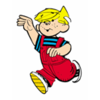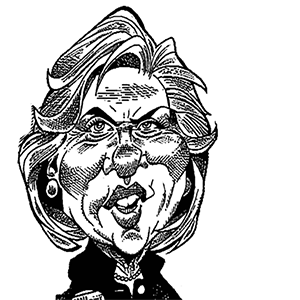Veteran of 4 spacecraft, NASA astronaut Butch Wilmore retires
Published in News & Features
ORLANDO, Fla. – Barry “Butch” Wilmore has flown on the space shuttle, a Russian Soyuz, Boeing’s Starliner and a SpaceX Crew Dragon.
After 25 years with NASA and 464 days in space, he’s calling it a career, the agency announced Wednesday.
A retired U.S. Navy captain, the 62-year-old Wilmore was chosen as an astronaut candidate in 2000 after graduating from the U.S. Naval Test Pilot School.
“Throughout his career, Butch has exemplified the technical excellence of what is required of an astronaut. His mastery of complex systems, coupled with his adaptability and steadfast commitment to NASA’s mission, has inspired us all,” said Joe Acaba, chief of NASA’s Astronaut Office. “As he steps into this new chapter, that same dedication will no doubt continue to show in whatever he decides to do next.”
His most recent trip to space made national headlines as he commanded the first crewed mission of the Boeing Starliner flying up to the International Space Station after launching from Cape Canaveral Space Force Station atop a United Launch Alliance Atlas V rocket on June 5, 2024.
While he and crewmate Suni Williams were able to dock one day later, the Starliner suffered helium leaks and thruster failures on its propulsion module delaying any return from what was supposed to be as short as an eight-day stay on board.
NASA ultimately elected to keep the two Starliner astronauts on board the station and send the spacecraft home without them last fall.
The meant the duo had to wait for a new ride home to get to the station, which came in the form of the Crew-9 mission in the SpaceX Crew Dragon Freedom that arrived in September. But they still had to wait until the end of Crew-9’s mission on the station, so did not fly back to Earth until nearly 10 months after first arriving, finally splashing down off the coast of Florida on March 18.
Despite not being able to fly home of the spacecraft he rode up on, Wilmore said he was a fan of the spacecraft.
“Starliner has the most capability when you think about its ability to maneuver automatically,” he said two weeks after his return. “I mean, I jokingly said a couple of times before we launched that I could literally do a barrel roll over the top of the space station. I would never do that, but you can.”
Wilmore was born in Murfreesboro, Tennessee in 1962 and raised in nearby Mt. Juliet outside Nashville. He earned bachelor’s and master’s degrees in electrical engineering from Tennessee Technological University and a master’s degree in aviation systems from the University of Tennessee.
“From my earliest days, I have been captivated by the marvels of creation, looking upward with an insatiable curiosity,” Wilmore said. “This curiosity propelled me into the skies, and eventually to space, where the magnificence of the cosmos mirrored the glory of its creator in ways words can scarcely convey.”
His first trip to space was as pilot for the nearly 11-day STS-129 mission to the space station aboard Space Shuttle Atlantis in 2009.
He then flew on his lone Soyuz mission in 2014 for a long-duration stay on board the station that lasted more than 166 days.
His third trip to space flying up on Starliner and home on Dragon made him and crewmate Williams unique among spacefaring humans.
The duo are only equaled by Orlando’s John Young as having flown in four different spacecraft, not including the space station. Young flew the first space shuttle flight on top of two Gemini and two Apollo missions. On Apollo 16, Young walked on the moon, so he flew in both the crew service module and the lunar module.
During Wilmore’s time in space, he performed five spacewalks spending more than 32 hours outside the safety of the space station. On his most recent trip, the devout Christian spent time to attend his home church’s online services each Sunday, and has been vocal about his faith while performing his duties for NASA.
“Even as I ventured beyond Earth’s limits, I remained attuned to the beauty and significance of the world below, recognizing the same intricate design evident among the stars is also woven into the fabric of life at home,” Wilmore said.
Wilmore’s retirement follows other NASA astronauts who’ve hung up their spacesuits this year including the astronaut class of 2009’s Kate Rubins and Jeanette Epps.
NASA’s list of astronauts eligible for space assignments sits at 42. Five of those are currently on the space station, although two are coming back to Earth as early as Friday. Another three are assigned to fly on next year’s Artemis II mission to fly around the moon.
The oldest astronauts still in the corps are from the 1996 astronaut class, which includes Mike Fincke, currently on board the station as part of Crew-11.
------------
©2025 Orlando Sentinel. Visit at orlandosentinel.com. Distributed by Tribune Content Agency, LLC.










Comments